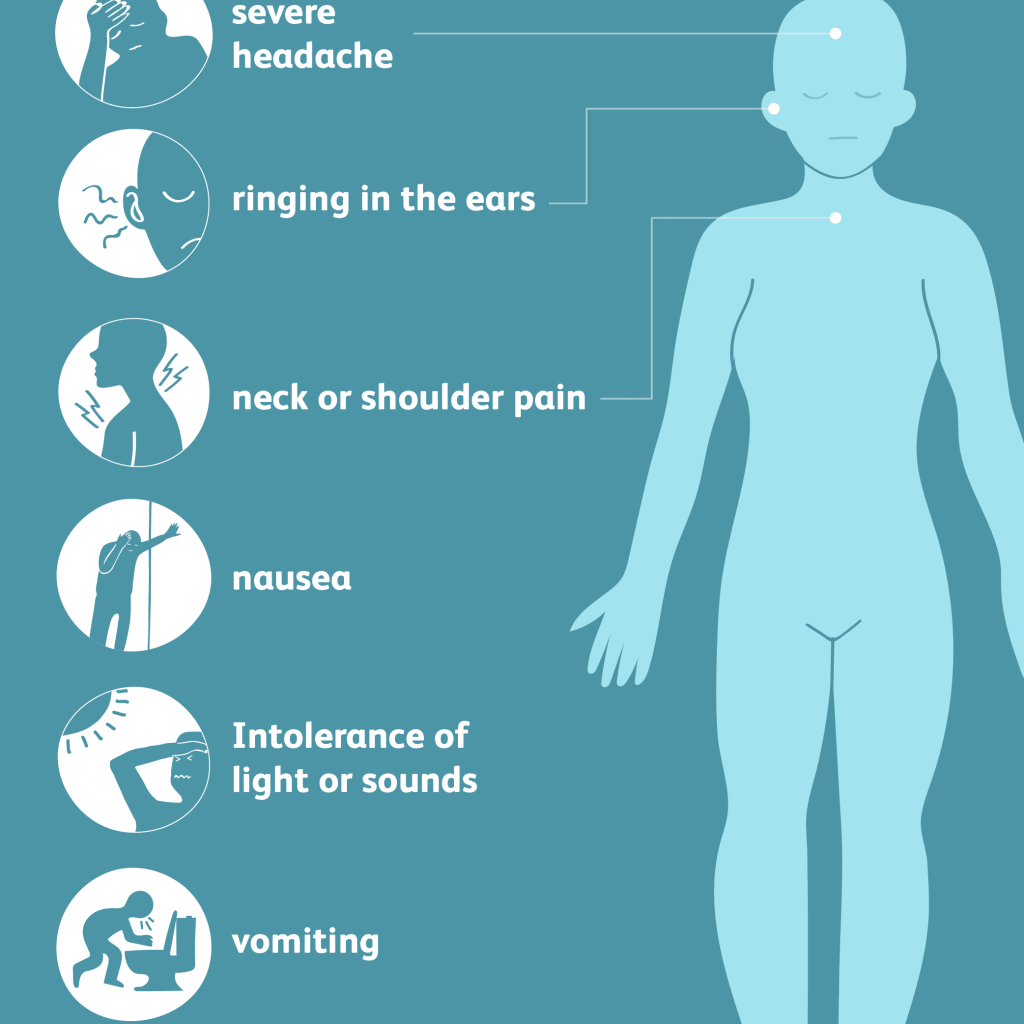What is a Migraine?

A migraine is a severe headache. It is classified as a neurological disorder (that affects the body’s nervous system.) Generally, a migraine headache only affects one side of the head. However, there a several different types of migraines, and many of them affect a specific area of the head while others affect the entire head. Which has sufferers asking what a migraine is, then if there is more than one type, which type do I have?
Roughly 28 million Americans suffer from migraine headaches. Females are more likely to suffer from severe headaches than males.
What is a Migraine?
Doctors believe they can answer the question of a migraine headache with the following explanation, a combination of blood vessel expansion with a sudden release of chemicals from the nerve fibers that wrap around the expanded blood vessels.
During a migraine headache, an artery expands that is positioned on the outside of the skull just under the skin of the temple. The artery’s expansion causes a release of chemicals that cause swelling (inflammation), severe pain, and additional enlargement of the affected artery.
How Long Does a Migraine Last?
A migraine can last from 2 hours up to 3 days. Along with the pulsating pain caused by a migraine, the sufferer can also experience increased sensitivity to sound and light, nausea, and vomiting.
Some people can sense just before a migraine occurs – the medical name for this perception is an aura. An aura can causes disturbances in vision, hearing and cause other sensory sensations. Not all people who suffer from migraines will experience an aura. The aura experience is beneficial to people who suffer from horrible severe headaches because it allows them time to take a prescribed medication that can help combat the pain just before or after it starts.
Vision Disturbances
Vision Disturbances Associated with a Migraine Aura include:
- Heightened sensitivity to light
- Dark or blind spots
- Spots that slowly move
- Flashes of colors
Hearing Disturbances
Hearing Disturbances Associated with a Migraine Aura include:
- Heightened sensitivity to sounds
- Normal sounds sound ten times louder than they are
- Voices and sounds can sound muffled, and some people hear a buzzing sound
Sensory Sensations
Sensory Sensations Associated with a Migraine Aura include:
- Feelings of confusion
- Strange taste and smells
- Fear and anxiety
- Nausea
- Unable to understand or comprehend spoken words during and after the aura
- Unable to read
- Lightheadedness
There are several more sensory sensations associated with a migraine aura. This list is minimal.
People who suffer from severe migraine headaches can cause major disruptions in their lives, especially for those who do not get an aura warning beforehand. It is even worse for those who suffer from severe headaches and are left wonder what a migraine is.
Trending Health Topics
- ADHD
- Allergies
- Arthritis
- Bipolar Disorder
- Bunions
- Car Accidents
- Chron's Disease
- Common Cold
- COPD
- Depression
- Dry Skin
- Dry throat
- Eczema
- Fungal Infection
- GERD
- HIV/AIDS
- Hypertension
- Irritable Bowel Syndrome (IBS)
- Multiple Sclerosis
- Osteoarthritis
- Psoriasis
- Rheumatoid Arthritis
- Skin Disorders
- strep throat
- Type 2 Diabetes
- Uncategorized